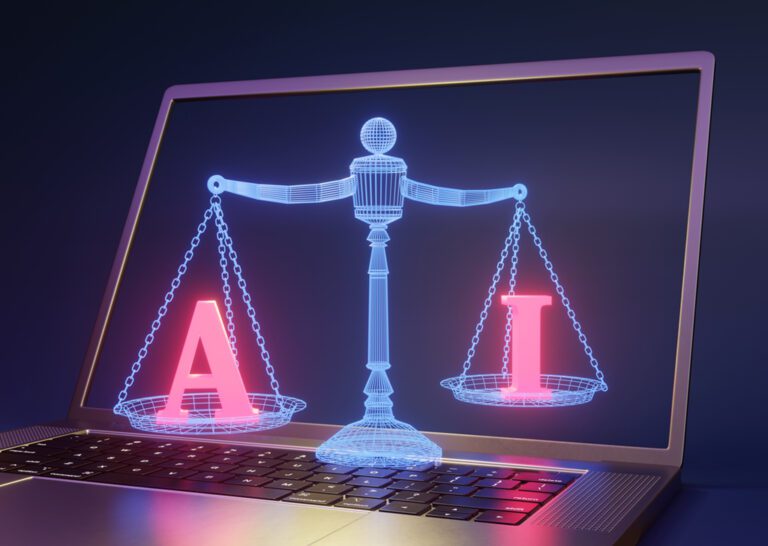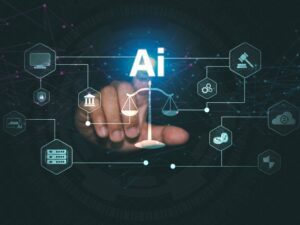California State Bar Approves Guidance on Generative AI: Striking a Balance Between Innovation and Ethics
By Noga Rosenthal
December 20, 2023

Noga Rosenthal is a seasoned privacy, compliance, and data ethics professional specializing in the technology sector. She has developed and managed global privacy programs for companies such as Xaxis, Epsilon and Ampersand. Rosenthal serves as a trustee for the Practicing Law Institute and an adjunct professor at Fordham Law School. LinkedIn profile
This story originally appeared in Today’s General Counsel.
In November 2023, a Colorado judge suspended a lawyer for using ChatGPT to draft a legal document. Just a few weeks later, a U.S. District Court Judge for the Southern District of New York questioned the legal representatives of Michael Cohen regarding three non-existent cases cited in their motion. These are just two of the more recent examples of how using Generative artificial intelligence (AI) in legal work can be risky.
Attorneys seeking guidance on this issue have a new reference point: “The “Practical Guidance for the Use of Generative Artificial Intelligence in the Practice of Law,” approved by the California State Bar Board of Trustees on November 16, 2023. This document, rather than setting strict rules, provides principles-based guidance to attorneys. The main point is that lawyers can use Generative AI– but they cannot abdicate all lawyering responsibility.
Here’s a summary of the new guidance:
Duty of Confidentiality: Lawyers must ensure client information is secure and not accessible to unauthorized parties. Using Generative AI tools may violate this obligation. Attorney-client privilege can also clearly be impacted.
-
- A lawyer must not input any confidential information of the client like name or legal facts into any Generative AI solution that lacks adequate confidentiality and security protections.
- Instead, a lawyer must anonymize client information and avoid inputting any details that can be used to identify the client. Alternatively, a law firm can license an enterprise version of the tool that does not allow the use of the client information and has robust security measures. Lawyers should review the terms and conditions of the Generative AI before using it to understand how the tool uses the prompts. They should also have their security or IT department review the security measures of the tool.
Duties of Competence and Diligence: The biggest public problem that lawyers have been facing when using Generative AI is not doing their diligence and checking to see if the Generative AI output is accurate. Some Generative AI tools may not have updated information leading to outdated legal analysis or the output is a “hallucination.” Human review and analysis is required under this rule to ensure the output is legally accurate and relevant. This includes checking the authenticity and correctness of cited cases, reflecting the duty to perform legal services competently and diligently.
Duty to Comply with the Law: A lawyer must comply with applicable laws and standards such as privacy, intellectual property, or AI-specific laws. For instance, in-house counsel should ensure that their marketing teams do not violate another party’s intellectual property rights if they are using Generative AI tools to create images for company sales materials.
Duty to Supervise Lawyers and Nonlawyers, Responsibilities of Subordinate Lawyers: Managing attorneys need to ensure that their associates’ and non-lawyers’ conduct also follows these obligations. Law firms should train all of their employees on these principles before the employees start using Generative AI.
Communication Regarding Generative AI Use: Lawyers should communicate with their clients about their use of Generative AI beyond the drafting of routine emails or other relatively mundane tasks. In general, they should follow a client’s direction around the use of Generative AI. For instance, a client may not want their data to be used to train the law firm’s enterprise tool.
Charging for Work Produced by Generative AI and Generative AI Costs: Though it’s fine for an attorney to use Generative AI to be more efficient, they should charge their client for the actual time worked- not for the time saved by using the Generative AI.
Candor to the Tribunal; and Meritorious Claims and Contentions: A lawyer must review all Generative AI outputs to ensure they are accurate before submitting them to court. In fact, a judge in Texas requires that lawyers appearing before him in court certify that they did not use Generative AI to draft their fillings without a human checking to ensure the statements are not misleading or the citations are wrong.
Prohibition on Discrimination, Harassment, and Retaliation: A lawyer should be aware that some Generative AI tools may be trained on biased information, which could impact a process like using Generative AI software to help with jury selection. Lawyers should monitor these tools for biases such as gender or race and work with a vendor that has policies and mechanisms to help identify, report and address these biases.
Professional Responsibilities Owed to Other Jurisdictions: A lawyer should analyze the relevant laws and regulations of each jurisdiction in which a lawyer is licensed to ensure compliance with such rules. For instance, an attorney licensed to practice in both New York and California would have to stay updated on any AI-related laws in both states.
The California State Bar Board of Trustees has already indicated that the Practical Guidance will be a living document that is intended to evolve alongside technological advancements, ensuring its relevance and effectiveness in addressing new challenges that arise from the use of Generative AI in legal practice.
The guidance underscores the profession’s commitment to maintaining ethical standards in an increasingly digital world. Lawyers must not only adapt to these technological changes but also critically assess and integrate these tools into their practice responsibly, keeping abreast of both the potential benefits and pitfalls of such advancements.
Get the free newsletter
Subscribe for news, insights and thought leadership curated for the law firm audience.




